What are the Retriever breeds? The following Breeds are classified as Retrievers by The Kenel Club
The Retriever Breeds
The Retriever breeds specified in the Kennel Club Retriever sub-group are listed below. Each breed is described briefly, each section contains a link to one of the breed clubs for each of the breeds.
As this page is long the following links will take you to the different breed descriptions.
Golden Retriever Flatcoated Chesapeake Bay Curly Coated Nova Scotia Irish Water Spaniel
LABRADOR
The Labrador is one of the best all-round dogs in the world. Not only used for retrieving game, he has also made his mark in the world of assistance dogs and as a ‘sniffer’ dog for drug and arms detection. It is popularly thought that he originated on the coast of Newfoundland, where fishermen were seen to use a dog of similar appearance to retrieve fish.
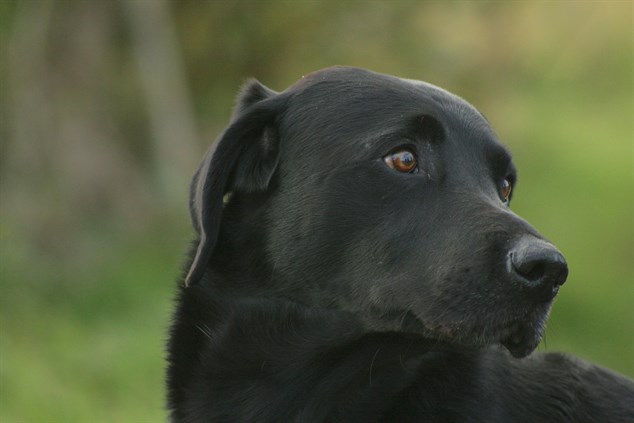
Stonepine Marram
An excellent water dog, his weather-resistant coat and unique tail, likened to that of an otter because of its shape, emphasise this trait. A real gentleman, he adores children and has a kind and loving nature and a confident air. The big city is not really his scene; a bit of a country squire at heart, he comes into his own in rural surroundings.
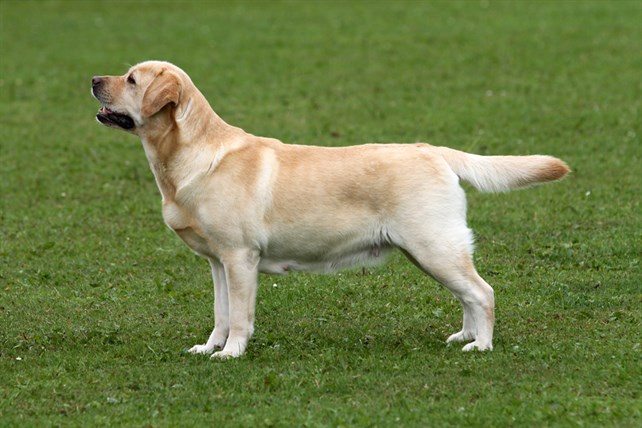
Winsleywood labradors Photo By Sharon Rogers
The following link will take you to the Labradopr Retriver Club website http://www.thelabradorretrieverclub.com/
Comparatively speaking, the Labrador is not a very old breed: its breed club was formed in 1916 and the Yellow Labrador Club founded in 1925. It was in field trialling that the Labrador found early fame, having been originally introduced to Great Britain in the late 1800s by Col Peter Hawker and the Earl of Malmesbury. It was a dog called Malmesbury Tramp that was described by Lorna, Countess Howe, as one of the ‘tap roots’ of the modern Labrador.
Breed Group Gundog; Vulnerable Native Breed No, Size Large
How much exercise? More than 2 hours per day, Length of coat Short
How much grooming? Once a week, Supposedly sheds?* Yes
Town or Country Either, Type of home Large House, Minimum Garden Size Large
Lifespan Over 10 Years
GOLDEN RETRIEVER
One of the most popular dogs in the world, the Golden Retriever was bred, as its name suggests, to retrieve game in the shooting field. The breed has adapted to so many roles that there is virtually nothing he doesn’t do, with the exception of being professional guard dog – a task for which his friendly temperament makes him quite unsuited. He has been a guide dog, a drug and explosives detecting dog, a tracker, an obedience competitor, in addition to the job he does so universally and well, simply being a friendly, energetic, fun-loving member of the family. He delights in any kind of water, from lakes and streams to muddy puddles, a reflection of his water spaniel origins. Boisterous and sometimes clumsy, he needs plenty of exercise to channel his enthusiasm.
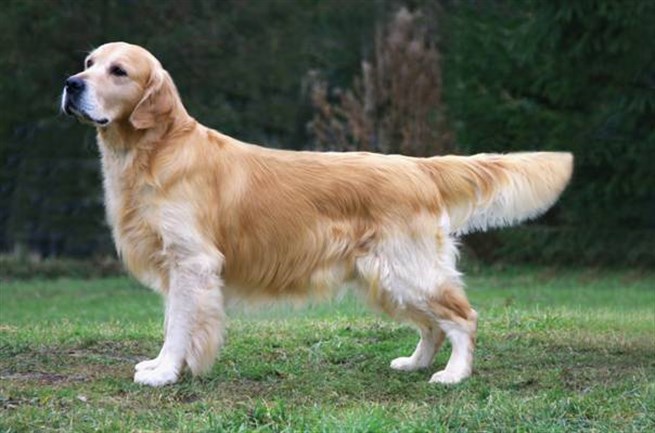
Catcombe Canoodle
Easy to train to basic obedience or higher standards, rarely a fussy eater, and with a thick coat that is reasonably easy to keep clean, but requires regular grooming, it is no surprise that the breed has risen in popularity over the decades. He often has the largest entry at Championship Shows. The Golden Retriever is built for pace and endurance in the field, with a dense water-resistant undercoat. His body is proportioned for a smooth, free striding action, with the size of the head and neck making it ideal for carrying game. In recent years there has been a divergence between Goldens bred for work and those bred for the show ring. The working bred Goldens tend to be slimmer and lighter framed, as it is considered that this makes them more agile in the field. They are also bred to possess an enhanced retrieving ability and to be responsive to training. A few dedicated breeders are still producing dual purpose Goldens, dogs that can win in the show ring and compete in the field. Generally bred from show stock, they are more successful in the show ring, but have also achieved some success in working tests and field trials.
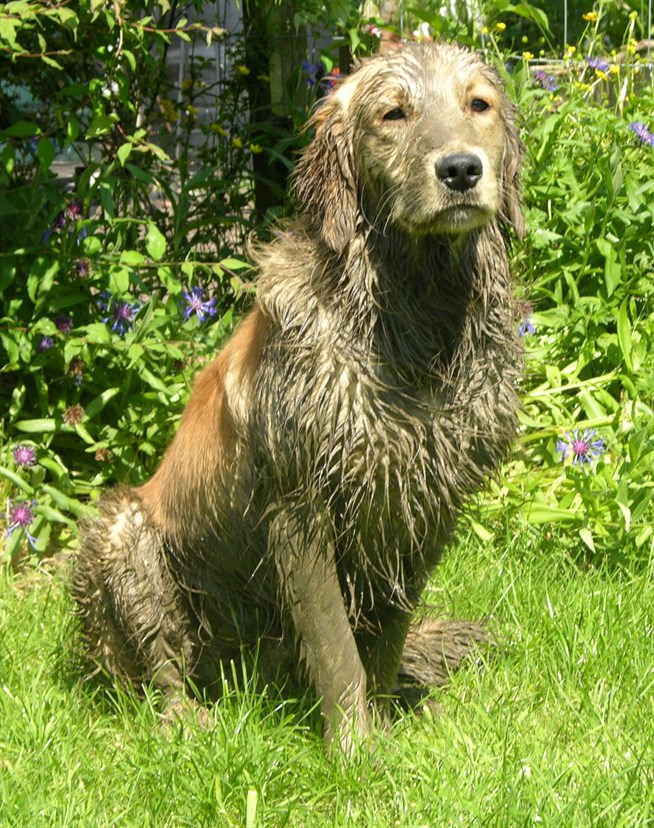
Alveston Puzzle, Not so pretty!
The following link will take you to the Golden Retriver Club website http://www.thegoldenretrieverclub.co.uk/
For many years there was confusion over the origin of the breed, but it is now generally accepted that it was the first Lord Tweedmouth who developed Golden Retrievers as a breed, from Tweed Water Spaniels bred to yellow retrievers. ‘Yellow’ Retrievers had existed for many years in the Border Country between England and Scotland, and at first Goldens were registered and shown as Flatcoats being defined only by colour until 1913. They took their present name in 1920.
It is unfortunate that the gap between pure working bred Goldens and those bred for the Show ring is ever widening (as it had done from the war days) and to excel in both the spheres of Conformation ( Shows) and Gundog work ( Field Trials), with the same dog, is exceedingly difficult.
Breed Group Gundog, Vulnerable Native Breed No, Size Large
How much exercise? More than 2 hours per day, Length of coat Medium
How much grooming? More than once a week, Supposedly sheds?* Yes
Town or Country Either, Type of home Large House
Minimum Garden Size Large, Lifespan Over 10 Years
FLATCOTED RETRIEVER
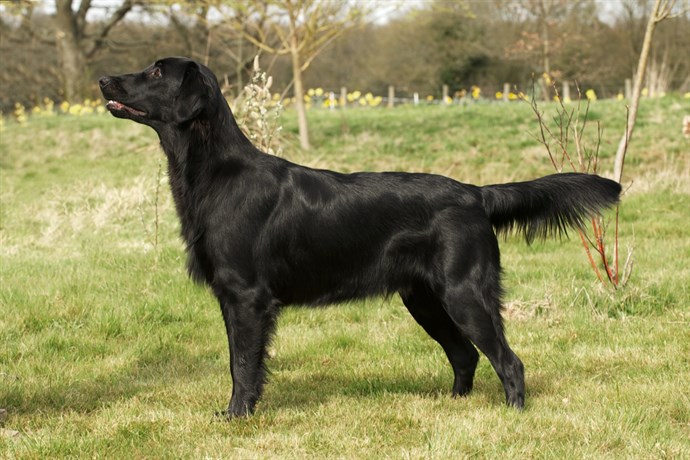
Countryside images
The Flat Coat is a slow-maturing dog, retaining his delightful puppy-like qualities for several years. An extrovert, with an incessantly wagging tail, he is always happy, eager to please and full of good humour and bonhomie.
A tireless worker in the field, he is an excellent water dog and a natural swimmer. He loves human companionship and is definitely not the dog to be shut up on his own. (Left alone, his Houdini-like qualities will soon become apparent in his endeavour to reunite himself with friends and family!)
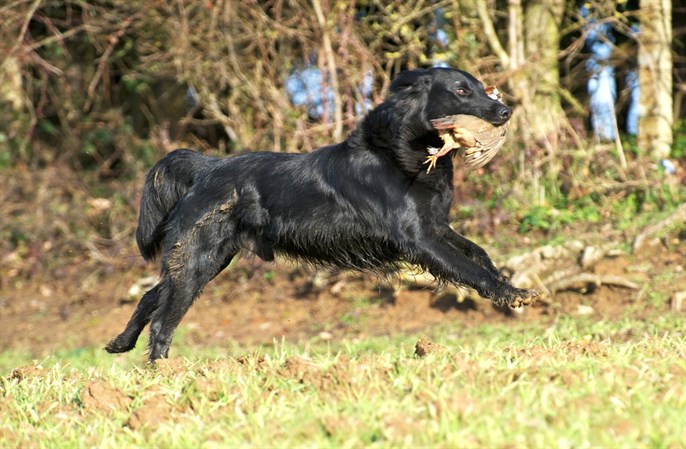
Countryside images
The folliwing link will take you to the Flatcoated Retriver Society's website http://www.flatcoated-retriever-society.org/
His deep bark makes him a good guard dog, giving warning of any strangers or intruders. He is in his element in the country and was at one time popularly known as the gamekeepers’ dog, attracting attention when widely used in the late 1800s on the large shooting estates. Mr Sewallis Evelyn Shirley, founder of the Kennel Club and its chairman from 1873 to 1899, helped stabilise the breed type.
Breed Group Gundog, Vulnerable Native Breed No, Size Large
How much exercise? More than 2 hours per day, Length of coat Medium
How much grooming? More than once a week, Supposedly sheds?* Yes
Town or Country Either, Type of home Large House, Minimum Garden Size Large
Lifespan Over 10 Years
CHESAPEAKE BAY
There is no doubt whatsoever about the origin of this breed. All the books ever written about the Chesapeake Bay Retriever are agreed on a tale about two puppies being rescued from a wrecked ship off the coast on the eastern seaboard of Maryland. They were reputed, some two centuries ago, to have been Newfoundland in type, were discovered to love water and so were crossed with local retriever types, probably including the Curly Coat. The result was the ultimate in natural waterproof dog.
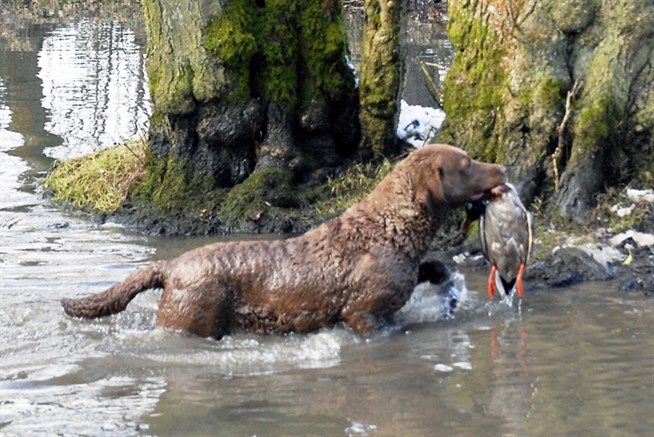
Penrose Chesapeake Bay Retrievers
Basically a duck-dog, he is at his very best in water, the colder the better; the oiliness and thickness of his coat is so efficient that a thorough shake restores him to a slightly
moist feel in no time at all. Undoubted courage, inexhaustible energy, strength of muscle, and affection tinged with independence all go to produce a dog for the energetic family. This is not a breed for the lazy. He eats in quantities sufficient for a dog of his size and ‘workrate’, which means he likes his food. Grooming is simple and elementary; a stiff brush and a chamois-leather will cover all his requirements.
The following link will take you to the Chesapeak Bay retriever Club http://www.chesapeakebayretrieverclub.co.uk/
Breed Group Gundog, Vulnerable Native Breed No, Size Large
How much exercise? More than 2 hours per day, Length of coat Short
How much grooming? Once a week, Supposedly sheds?* Yes
Town or Country Country, Type of home Large House
Minimum Garden Size Large, Lifespan Over 10 Years
CURLY COATED
The Curly is the first retriever to be used for serious retrieving work in England and was exhibited as a recognised breed for the first time in 1860. It is the largest of the retrieving breeds and will be black or liver in colour. Their early ancestry is unknown but it is thought that a number of breeds that are now extinct played a part in the original formation of the dog as you see it now, they are the Large Rough Water dog, the Tweed Water Spaniel and the Lesser Newfoundland.
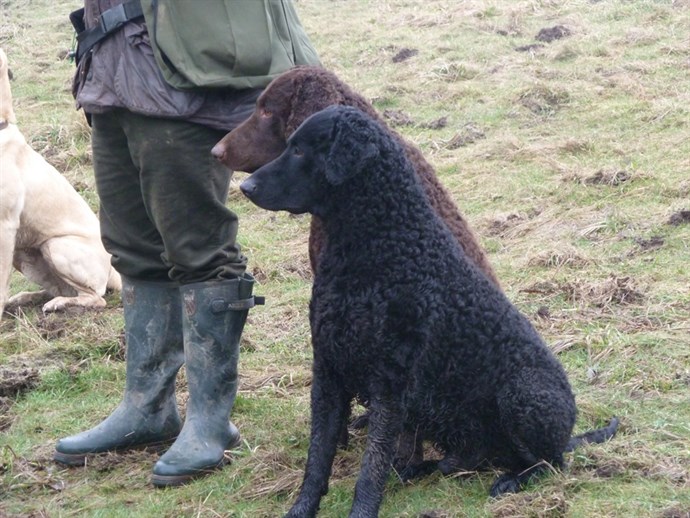
The temperament of the Curly is self confident, steadfast and aloof and this active intelligent dog is a charming and gentle family companion and a determined, durable hunter. The Curly is alert and responsive to family and friends, whether at home or in the field. In the field the Curly is eager, persistent and inherently courageous. At home he is calm and affectionate although often less demonstrative, particularly towards strangers, than the other retriever breeds.
Breed numbers have remained stable since the Second World War with approximately 130 puppies being registered with the Kennel Club each year, this compared with 45,000 Labrador Retrievers registered will give you some idea of the rarity of the breed. Although small in number the Curly is still as “fit for purpose” as it was over two centuries ago when the breed was used daily by the gamekeeper as his hard working and faithful companion.
One of the most distinctive features about this dog is his coat, the colour of which is either black or liver. His body, ears and tail are covered with tight, crisp curls, whilst his face and muzzle are smooth haired. His coat is waterproof and, even after a swim, he shakes himself a few times and is practically dry. This unique coat does require specialised treatment to keep it at its best.
He has a remarkable ability to mark the fall of game and remember locations, and is brilliant at retrieving the wounded duck hiding in water or rushes. In fact, a good nose, combined with intelligence, endurance and strength, gives him the ability to retrieve most game. He is friendly, but despite this, is a good guard dog. He needs plenty of exercise, and is essentially an outdoor type.
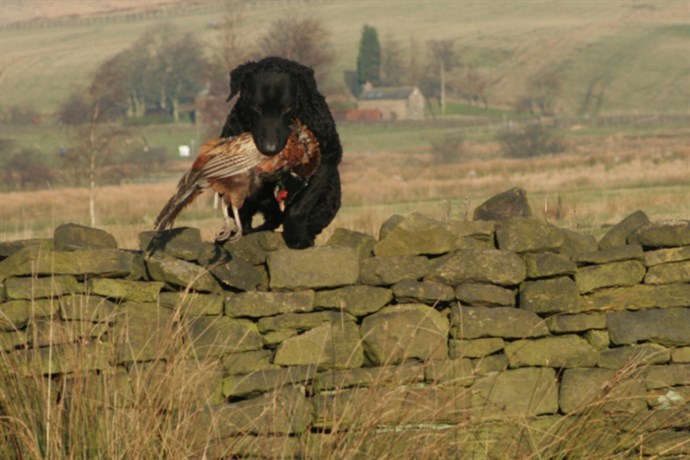
The following link will take you to the Curly Coated Retriver Club website http://www.curlycoatedretrieverclub.co.uk/
The breed is around 200 years old, having evolved from crosses of water spaniels and varieties of retrievers and, say some, pointers. Cross breeding with Poodles is believed to have been used to tighten the curl in the coat. It was at its most popular as shooting dog in the latter part of the nineteenth century and many Curlies were exported to New Zealand and Australia to hunt birds.
Breed Group Gundog, Vulnerable Native Breed Yes, Size Large
How much exercise? More than 2 hours per day, Length of coat Medium
How much grooming? More than once a week, Supposedly sheds?*Yes
Town or Country Country, Type of home Large House
Minimum Garden Size Large, Lifespan Over 10 Years
NOVA SCOTIA
Yarmouth County, Nova Scotia, Canada is considered the place of origin of the purebred dog officially known as the Nova Scotia Duck Tolling Retriever - or more affectionately known as the “Toller.”
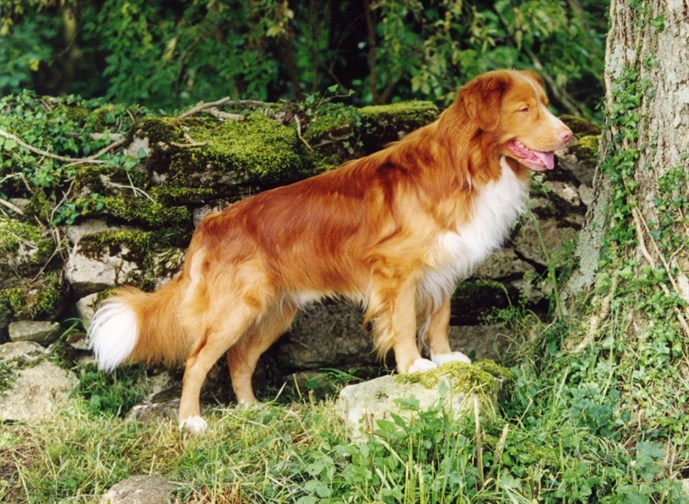
The Nova Scotia Duck Tolling Retriever (Toller) was developed in the early 19th century to toll, or lure, and retrieve waterfowl. The playful action of the Toller retrieving a stick or ball along the shoreline arouses the curiosity of the ducks offshore. They are lured within gunshot range, and the dog is sent out to retrieve dead or wounded birds.
There is no authentic record of the development of the Toller, but present day thinking is that the basic stock was the red decoy dog, probably brought to Nova Scotia with the early settlers from Europe. Crosses with other breeds: possibly spaniel and setter-type dogs; retriever-type dogs; and farm collie, produced today’s Toller. Originally known as the Little River Duck Dog after the district of Yarmouth County, or as a Yarmouth Toller, the Toller has bred true for generations and was granted official breed status by the Canadian Kennel Club in 1945, when 15 were registered.
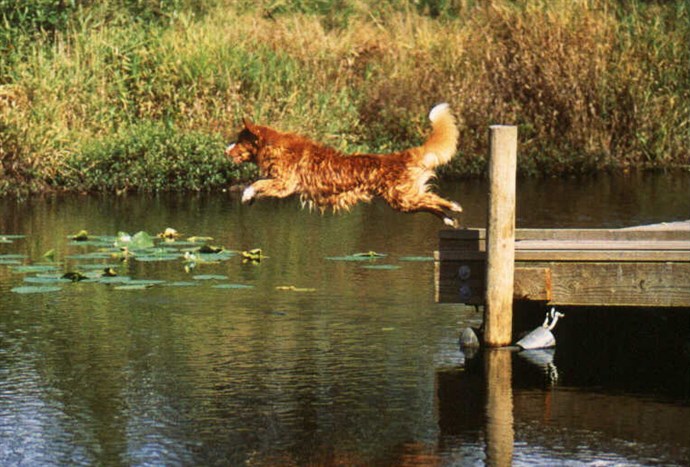
The following link will take you to the Nova Scotia Duck Tolling Retriver Club of UK http://www.toller-club.co.uk/
Breed Group Gundog, Vulnerable Native Breed No, Size Medium
How much exercise? Up to 1 hour per day, Length of coat Medium
How much grooming? More than once a week, Supposedly sheds?* Yes
Town or Country Either, Type of home Small or Large House
Minimum Garden Size Small/Medium, Lifespan Over 10 Years
IRISH WATER SPANIEL
CLASSIFIED AS A SPANIEL FOR SHOWS AND A RETIEVER FOR WORKING
The tallest of all the Spaniels, the Irish Water Spaniel is a breed of great antiquity. He delights in water and is an admirable and enthusiastic retriever. He derives considerable intelligence from the Poodle, which has obviously played a significant part in his ancestry. Although tall, he is always well balanced. A dark liver in colour, his coat is composed of dense, tight ringlets, which cover every bit of him except his muzzle, the front of his neck and the major portion of his tail.
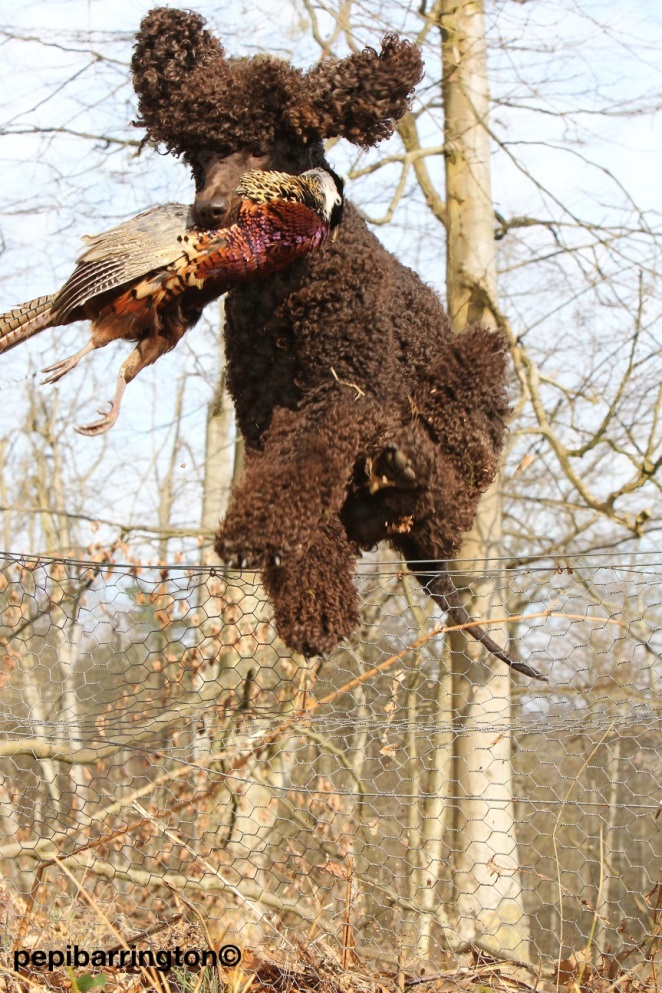
The Irish Water Spaniel is something of an enigma: although in Britain he is shown as a Spaniel, he works in field trials as a retriever. The breed attracted attention when show classes were first put on for him at Birmingham in 1862.
He is blessed with an affectionate disposition, and a distinct sense of humour. He is not a big eater for his size, and makes both a good worker in the field, especially for a wildfowler, and a lovable family dog, revelling in all the exercise that is on offer.
10 things you didn't know about the Irish Water Spaniel
1) They were originally bred to hunt, flush and retrieve wildfowl in the marshes and bogs of rural Ireland
2) All of the IWS in the world can be traced back to a single dog Boatswain, bred in 1834 in Ireland by an Irish Field Sports Enthusiast Justin McCarthy from Dublin
3) The Irish Water Spaniel is the only surviving Water Spaniel breed in the British Isles, all others are now extinct
4) The Irish Water Spaniel coat doesn’t moult and can be spun and knits similar to alpaca. They are worth considering for anyone who suffers from asthma or allergies.
5) They have webbed feet which makes them very strong powerful swimmers.
6) The breed remains rare, less than 300 a year means entry on the Kennel Club Vulnerable Breeds Register.
7) Their most distinctive feature is the breed’s coat which has crisp dense curls of a liver brown colour
8) They make good family pets and are loyal, endearing and affectionate, possess a real sense of humour and are great fun to be around.
9) The modern IWS is a multi purpose Gundog and can be used for wildfowling, picking up, rough shooting (both flushing & retrieving) and in the beater’s line flushing game.
10)The Irish Water Spaniel possess exceptional powers of scent and at least one has been used as a “Sniffer Dog”.
Information derived from Sporting Irish Water Spaniel Club, website http://www.siwsc.org.uk/
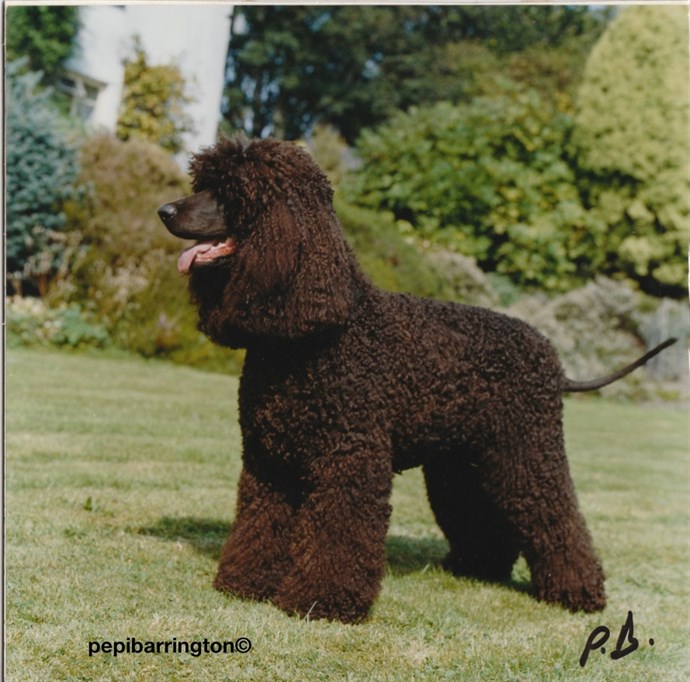
Breed Group Gundog, Vulnerable Native Breed Yes, Size Large
How much exercise? More than 2 hours per day, Length of coat Medium
How much grooming? More than once a week, Supposedly sheds?* No
Town or Country Country, Type of home Large House, Minimum Garden Size Large
Lifespan Over 10 Years
GO TO TOP OF PAGE
By kind permission of the Kennel Club